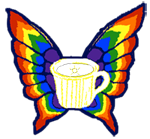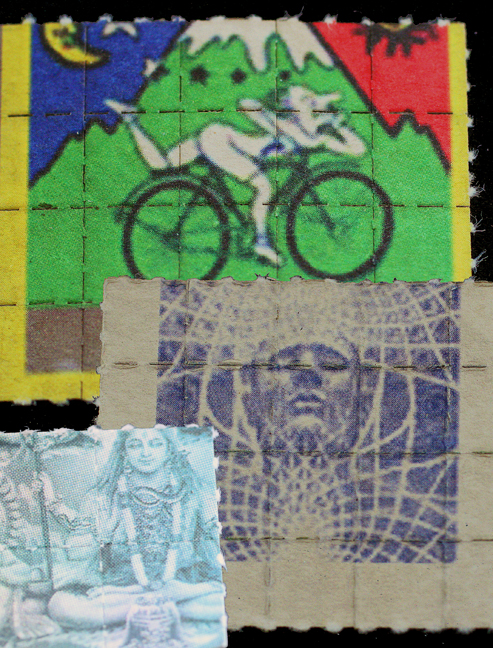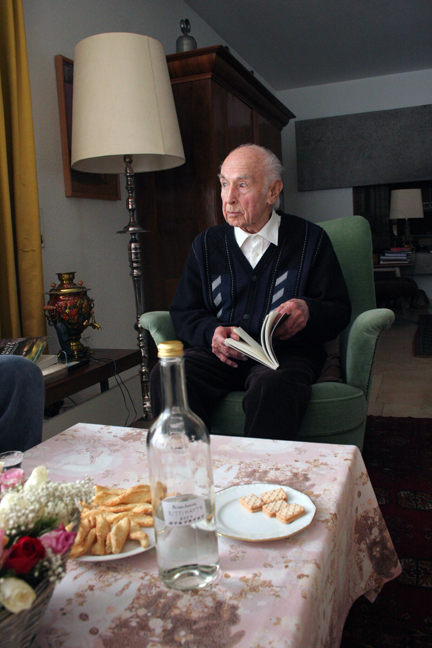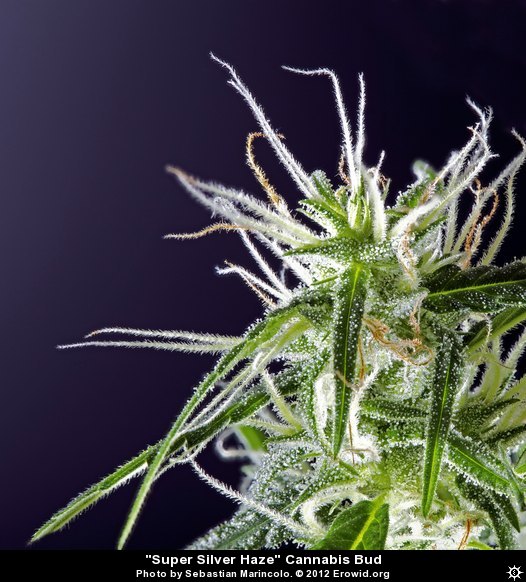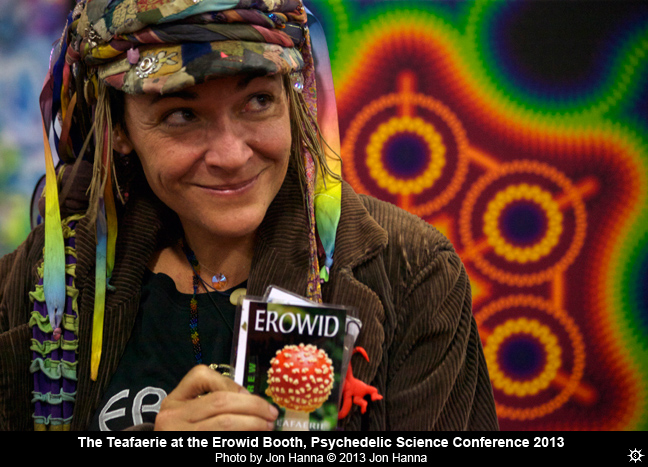High Holy Days
I’m writing this essay a few days before the big Psychedelic Science conference is scheduled to get underway, but by the time you read these words it will all be but a happy cloud of delightfully surreal memory fragments. I originally wanted to wait until after the conference was over and then try to write some kind of a gonzo retrospective about the excellent adventures that as of this writing still await me in the near future. But deadlines are especially tight this month and my editors are wise in the ways of the Teafaerie. They know damn good and well that I’ll probably be enormously inspired but effectively useless in the early part of next week, especially since Psychedelic Science just so happens to coincide with both Bicycle Day and 420 this year.
For those of you who are just tuning in, Bicycle Day commemorates the world’s first intentional LSD trip, and it’s probably the best known and most widely celebrated of the High Holy Days. The story has already begun the process of transmuting itself into the stuff of legend: On April 16, 1943 a Swiss chemist named Albert Hofmann indulgently followed up on a nagging urge to resynthesize a totally random-seeming ergot derivative that he had made once before and found useless. He probably would have shelved it again, in fact, but by luck or fate the normally fastidious scientist must have allowed some of this unusual material to come into contact with his exposed skin. To say that he was exceedingly surprised by the quality of the relatively mild but utterly unprecedented experience that resulted would be a gross understatement.
Three days later the curious and courageous chemist decided to try to find out exactly what it was that he had on his hands (heh-heh) and accordingly he determined to embark upon an exceedingly cautious bioassay, basing his minimal dose on the most potent active ergot alkaloid scientifically known at the time. He decided to start with 250 micrograms of pure LSD-25, which he expected would likely be an inactive dose. It soon became obvious that the good doctor had miscalculated somehow, and after a little while he wisely asked his lab assistant to escort him back to his house for the day. Now all of this took place during a period of wartime gasoline rationing, so Dr. Hofmann had no choice but to ride his trusty old bike home whilst his universe more-or-less came apart inside of him and then miraculously rebuilt itself again. He later wrote up the world’s very first acid trip report, in which he eloquently detailed the vivid and at times extremely moving impressions that flooded his overwhelmed sensorium as he sailed through the streets of Basel and into history.
This tale lies at the heart of the psychedelic meta-culture’s collective creation myth. It’s the kind of story that we tell the upcoming generation in order to explain how the world came to be the way that it is. Most importantly, it’s a story that we all share in common. In the seventy years that have elapsed since those fateful days in 1943, millions upon millions of people have been caught-up in the tsunami of radical change that was unknowingly set into motion by Dr. Hofmann’s unlikely discovery. These days even people who would never dream of taking psychoactive drugs themselves are statistically almost certain to have had their lives fundamentally touched by at least a few of the ideas, technologies, social movements, and works of art that can meaningfully be said to have been at least partially inspired by the LSD experience. Everybody who lives in the first world has definitely felt its impact, in any event. And those who identify with any part of the complex network of divergent groups sometimes anachronistically referred as the “counterculture” can all proudly trace important aspects of their memetic lineage back to that selfsame singular t[r]ipping point.
So when Illinois college professor Thomas B. Roberts decided that psychedelic enthusiasts everywhere “needed a weekend” of their own, the anniversary of Albert Hofmann’s initial, accidental exposure to LSD stood out as an obvious candidate. However, Professor Roberts eventually decided to run with the Bicycle Day branding instead–celebrating Hofmann’s second, purposeful exposure–apparently for wholly practical reasons. Roberts started throwing these annual shindigs in the Spring of 1985, and the 16th of April happened to fall on a boring old Tuesday that year, whereas the anniversary of Hofmann’s historic bike ride was strategically situated on a far more festival-friendly Friday.
The Bicycle Day tradition has since been picked up by people all over the world. And I’ve got to say that I’m very much looking forward to the festivities this year! The Psychedelic Science conference takes place in Oakland, California, and of one of the special bonus packages that I signed up for includes a sunset cruise across the Bay, which is supposedly going to let us all out somewhere very close to Alex and Allyson Grey’s all-night Bicycle Day party in San Francisco.
I’m probably not actually going to take any acid on Bicycle Day, though, because I’m planning on making myself useful. I’ve been trying to raise some badly needed money to help support Ann and Sasha Shulgin lately, and I feel like I’ll have more fun volunteering at the donations table than I’d have rocking-out on the dance floor. Maybe I’m finally getting to be a little old lady. I’m totally down with abstaining, though. Bicycle Day, at least for me, is more than just another excuse to take a bunch of drugs. I think of it as a meta-tribal celebration of our newly discovered and rapidly blossoming potential.
Events like Bicycle Day also help members of the larger community to identify their fellow heads and to provide a low-pressure context in which they have an opportunity to network with like-minded people. Just feeling free to speak openly about one’s practice can be profoundly revelatory for someone who has been working in relative isolation for a long time. There’s an element of “coming out” surrounding the whole experience and there’s also an element of mutual solidarity that I find to be enormously satisfying. Besides which, it’s a lot of fun.
Some of the same things could be said about MAPS itself, now that I come to think about it. Producer of the Psychedelic Science conferences, the Multidisciplinary Association for Psychedelic Studies, is the force behind many of the current batch of legal (and might I add extremely successful) studies that are exploring MDMA as a possible treatment for post-traumatic stress disorder and end-of-life anxiety. They also put on one hell of a conference. Pretty much everybody who’s anybody is going to be there, and a quick glance through the program of workshops, panels, and presentations assures me our cups will at all times be running over with an abundance of awesome. The hard part is going to be deciding what I can afford to miss. Or figuring out how to replicate myself….
More than 1,500 psychedelic superstars, top scholars, authors, artists, members of leading research teams, and dedicated enthusiasts are expected to attend the Psychedelic Science conference this year. Some of us know each other personally, and most of us at least try to keep up with one another’s work when possible. In any event, we’re all friends on Facebook or whatever, and it simply delights me no end to get to hang out with so many of my friends and folk heroes. Especially when they speak eloquently about my favorite subjects all day long (and then also have fun at night).
Like the very best holiday celebrations, good conferences create a container that seems to be outside of the normal flow of casuistry, somehow. There is a sense that one has entered into a secondary world where some of the usual rules of engagement have been temporarily suspended. People dress up and stuff. Excrement occurs. (I just realized that I totally dodged a bullet by busting this column out before the conference. My gonzo rehash of the con would surely have been fun to read, but there are very good reasons that what happens at psychedelics conferences stays in that parallel universe.)
420 is another High Holy Day that has gotten a lot of traction in recent years. Most people know that 420 has something to do with marijuana, but the origins of this meme are a bit murky. When I first heard that number in the mid-1990s, somebody told me that it was “the police code for pot.” I’ve also heard that it’s a penal code thing, that 420 was Bob Marley’s birthday (it’s not), and that it has something to do with the number of organic compounds in cannabis.
All of this turns out to bullshit. According to Snopes, it seems that 420 started out as an inside joke between a few San Raphael high school kids way back in 1971. 4:20 pm was just the time when these particular miscreants traditionally met up in order to get high after school. Eventually it drifted into the local parlance as a generalized euphemism for all things stoney. Over time, a whole bunch more people picked up on it, and it sort of went viral, despite–or perhaps just because of–its lack of a known meaning. However, as a nice coincidence–or staggeringly slow morphic resonance–Snopes points out that Albert Hofmann’s experience report notes that this was the time that he dropped LSD on Bicycle Day. (Dude, it’s 16:20!)
Anyway, at this point it’s just a thing because it’s a thing because it’s a thing. Which I happen to think is kind of awesome. And the upshot is that April 20th has now essentially become International Marijuana Appreciation Day. It’s a time when the hardcore stoner contingent proudly celebrates their cultural identity as well as their patron ally. 420 has increasingly become a focalizing force for marijuana and hemp activism. A good number of events, demonstrations, marches, and rallies take place on April 20th every year now, as well as the more traditional parties and private smoke-offs.
So-called “psychedelic culture” is actually more like an overlapping patchwork of interlocking subcultures, each with its own respective set of icons, rituals, memes, techniques, philosophies, values, and traditions. Each of these subcultures has its own holidays, too. Deadheads celebrate Jerry Garcia’s birthday. Burners have Burning Man (obviously). The Rainbow Family celebrates Interdependence Day. And of course there are a whole lot of smaller niche celebrations. I know people who always take mushrooms on March 4th to commemorate the experiment at La Chorrera, for instance. And some good friends of mine always smoke DMT on the 3rd of April: the day that Terence McKenna left the party.
The discovery of LSD is sort of like the Old Testament, though. By which I mean that it happened way back before the various memetic rivers forked, and therefore it serves as a common origin story that loosely unites a number of now wildly divergent (and occasionally even hostile) factions.
And that’s why I especially want to big it up. Because I think of it as a way of uniting all the tribes. I mean everybody has a little piece of the puzzle, right? And while it’s true that theories and techniques vary both widely and sharply, it’s also true that those who use psychedelics regularly do share some sort of a common bond. At the very least we’re all perplexed by the same mysteries. Plus most of us are enormously excited about what it all might eventually end up portending for the human future. Oh yeah, and we all sort of want to stay out of prison, too. So it seems more than possible that we might share some common political goals. We won’t know for sure until we start talking to one another more often.
In the Teafaerie’s Ultimate Fantasy, Bicycle Day will eventually morph into some kind of a worldwide cognitive liberty campaign complete with psychedelic pride parades and enormous anti-drug war demonstrations in all of our more progressive major cities. Of course it’s possible that this strategy would end up working against us in the long run. I’m going to go ahead and throw it out there anyway, though, because I honestly do believe that cognitive liberty is going to turn out to be one of the defining civil rights issues of the twenty-first century. I earnestly understand and resonate with the position of the folks who say that we’ve just got to wait it out. It’s true that we seem to be making incremental progress right now, and some people are terrified that we might jinx it if we rock the boat. Yet at times I wonder if that’s not just a more subtle form of oppression. Which is not to say that I truly believe that our hard-won victories are actually part of the nefarious dominator control scheme or what have you. It’s just that I happen to have two amazingly beautiful friends who are sitting in jail right this very minute, merely for trying to twiddle with their own dials. And sometimes it’s hard to be patient.
Addendum
The Teafaerie’s adventures at Psychedelic Science were indeed excellent. I’m dripping with glorious Victory, in fact.
Plus I’m even more inspired to make a big thing out of Bicycle Day than I was before. Partly this is because the owner of the club in San Francisco where this year’s celebration happened made me take the freaking Shulgin donation table down because the oversold space was too crowded for comfort. (Seriously?!) The art and music were wonderful, but this thing has simply gotten too big to be stuffed into a nightclub. We need to open it up and bring it on, now. Albert Hofmann was a big fan of nature. Perhaps it makes sense to celebrate the occasion outdoors? And Bicycle Day happens to fall on a Saturday next year…


